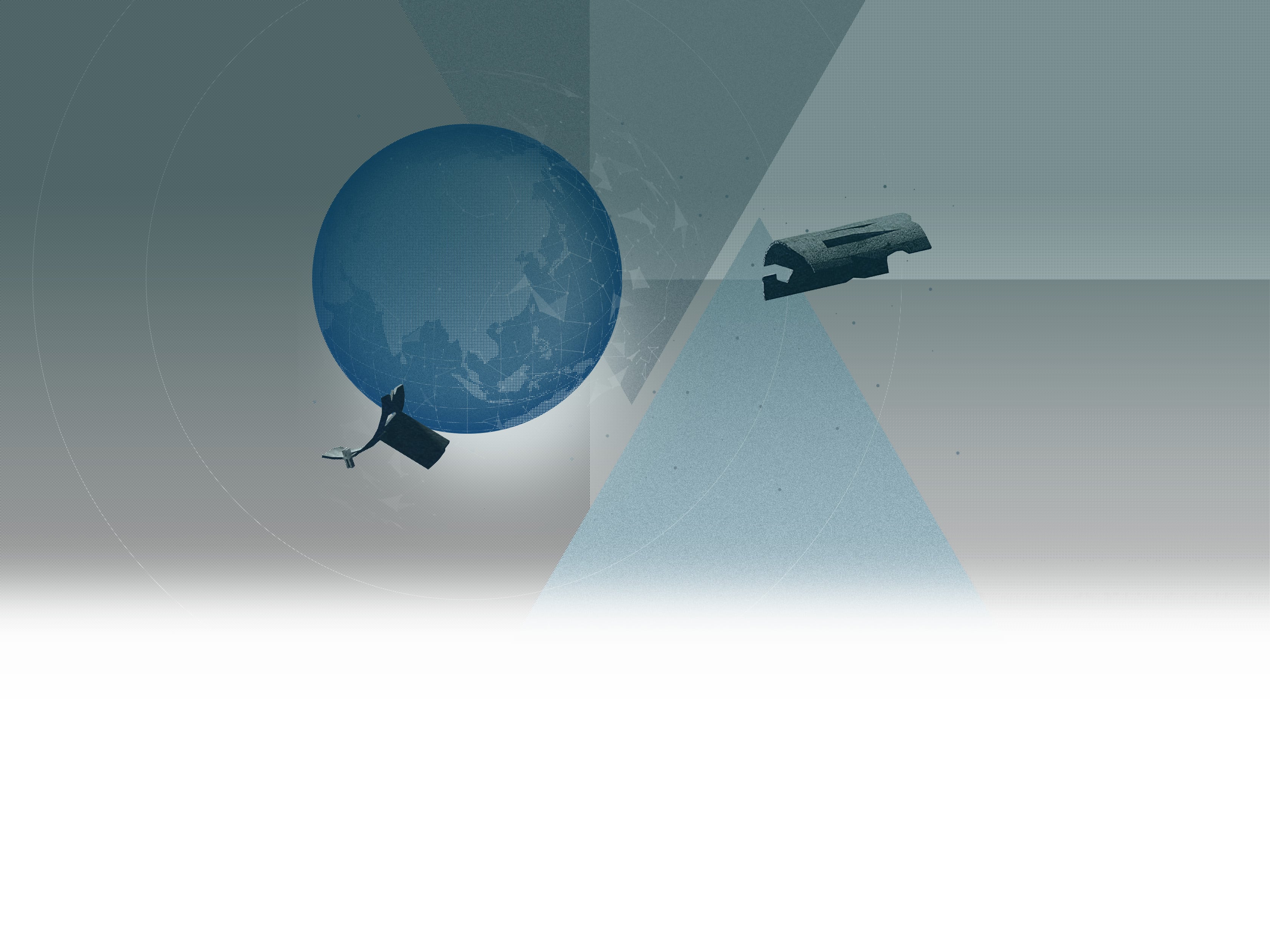What is space debris?
Unwanted man-made objects in orbit. These include debris such as terminated or failed satellites, upper stages of launch vehicles, parts ejected during mission execution, and debris generated by explosions or collisions.
How much space debris is there?
It is estimated that there are approximately 25,000 objects larger than 10 cm that have been tracked from the ground, and more than 100 million objects larger than 1 mm.
Where is space debris located?
The most commonly used orbits are crowded, including low earth orbit at an altitude of 2000 km or less used by earth observation satellites, geostationary orbit at an altitude of 36,000 km used by communication satellites and weather satellites, and 12-hour cycle orbit at an altitude of 20,000 km used by GPS satellites. In recent years, however, the number of mega-constellations (space systems consisting of many satellites) operating at relatively low orbital altitudes has been increasing, and the degree of congestion is also increasing below an altitude of about 600 km.
Why is space debris a problem?
Both spacecraft and debris orbit the earth at 7 to 8 km per second in low orbit, so when debris collides with spacecraft, the relative velocity is 10 to 15 km per second in a very high-speed collision. This is more than 10 times faster than a pistol, and even small debris has enormous kinetic energy. Therefore, a debris impact of 1 cm or larger is said to cause catastrophic damage to the spacecraft, and even debris a few hundred micrometers in diameter can cause mission-ending damage if the collision is not properly placed. There is also concern that when large debris collides with each other, not only thousands of debris larger than 10 cm will be generated, but also hundreds of thousands of 1 cm class debris and millions to tens of millions of 1 mm class debris.
This is a self-propagation process in which the number of debris increases due to collisions between debris already in orbit. If Kessler syndrome has started, the number of debris will continue to increase even if all satellite launches are stopped in the future.
What type of space debris is worth removing?
It is not realistic to remove minute pieces of debris (500,000 to 700,000 pieces for 1 cm or larger and 100 million pieces for 1 mm or larger) one by one after they are generated. The method considered to be realistic way is to remove debris worth removing to suppress a occurrence of collision between large debris. Such debris is that has "a high probability of collision" and "a large amount of debris to be scattered in the event of collision". Therefore, debris that exists in crowded orbits, is large in size, and has a large mass, is more effective in improving the space environment through removal, and is therefore more "valuable" to be removed. The value also depends on whether the evaluation is based on short-term or long-term impacts. Debris with a high orbital altitude tends to remain in orbit for a long period of time, so the value tends to be calculated higher when the long-term impact is important.
How does it affect our daily lives?
Our lives are supported by numerous space systems, and we may lose access to their benefits. For example, if debris were to collide with a weather satellite, it would be impossible to acquire data, which could affect weather information. In addition, the need for and frequency of rocket engine firing to avoid collisions with debris (called collision avoidance maneuvers) has been increasing in satellite operations in recent years, and this has already begun to have an impact in the form of an increased burden on operators.
What is CRD2?
CRD2 stands for Commercial Removal of Debris Demonstration. In this program, JAXA collaborates with private companies that aim to commercialize space debris countermeasures, and aims to realize the world's first technological demonstration of large debris removal. In Phase I, we will approach and control the proximity of large debris (the upper stage of a rocket that has already existed in orbit for a long period of time) to obtain images that show the movement, damage, and deterioration of debris that has been left in orbit for a long time, for which there is little information worldwide. In Phase II, the world's first large debris removal will be demonstrated by actually capturing and removing large debris from the crowded orbit.
Why is CRD2 trying to remove the upper stage of the rocket as target space debris?
There are various scientific papers on what debris is worth removing. The common conclusion is that debris that is present in crowded orbits, is large in size, and has a high mass should be removed. In CRD2, the upper stage of the rocket is used as the target object because it has a relatively large mass, its shape is simple, they all have the same general shape, and it is an object launched by Japan.
What else will the technology gained from CRD2 be used for?
The technology to safely approach, fly near, and perform some type of work on orbital debris can be applied to in-orbit services for operational or failed satellites (orbit conversion services, refueling services, replacement services for failed components, etc.). It is one of the important aims of CRD2 that private operators can apply the technology acquired through the technology demonstration in CRD2 to their business in the field of on-orbit services.



